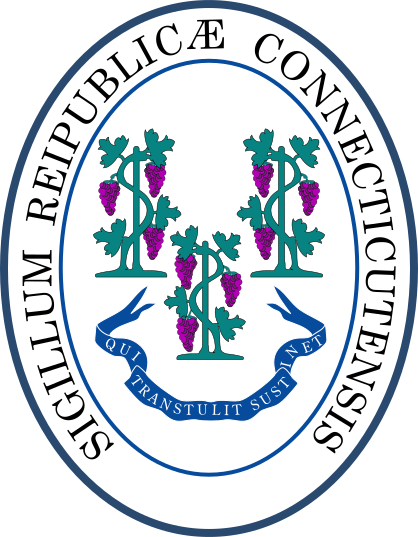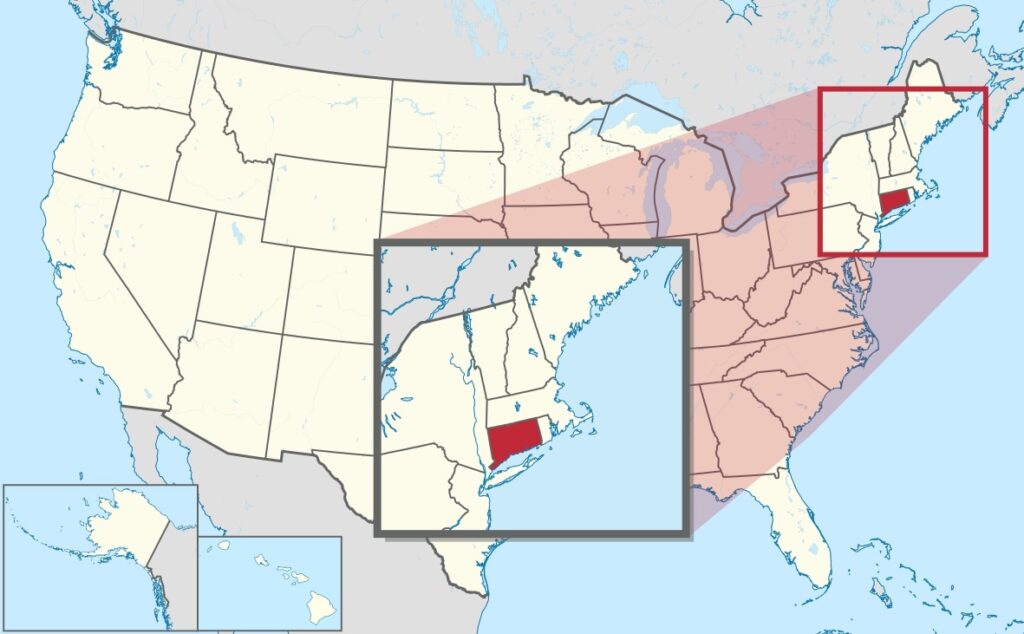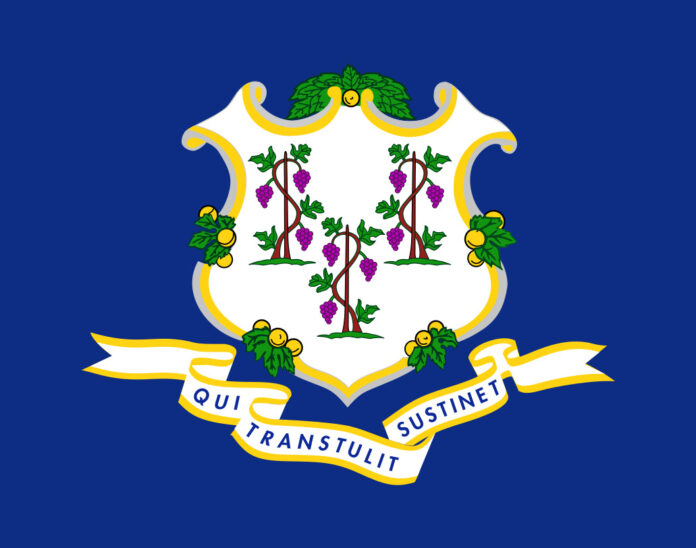Connecticut, one of the original thirteen colonies, is a state steeped in history and tradition. Despite being one of the smallest states in the United States by area, Connecticut has played a significant role in the nation’s development, from its early colonial beginnings to its modern contributions in industry, education, and culture. Known as the “Constitution State,” Connecticut boasts a diverse landscape that ranges from picturesque coastal towns along Long Island Sound to the rolling hills and forests of its interior. This comprehensive exploration delves into Connecticut’s geography, history, economy, cultural highlights, and notable contributions to the United States.
Geography and Natural Features
Located in the northeastern region of the United States, Connecticut is part of New England and shares borders with New York to the west, Massachusetts to the north, and Rhode Island to the east. The state covers an area of approximately 5,567 square miles, making it the third smallest state by area. Despite its size, Connecticut’s geography is remarkably diverse.
- Coastal Plains and Long Island Sound: The southern edge of Connecticut is defined by its coastline along Long Island Sound. This area features sandy beaches, tidal marshes, and charming seaside towns like Mystic, Old Saybrook, and New London. The sound provides vital habitats for marine life and supports a thriving maritime industry.
- The Connecticut River Valley: The Connecticut River, the longest river in New England, runs north to south through the center of the state before emptying into Long Island Sound. The river valley is known for its fertile soil, supporting agriculture and vineyards, and is home to historic towns like Hartford, the state capital.
- Western Highlands and Eastern Uplands: The western and eastern regions of Connecticut are characterized by rolling hills and low mountains, part of the Appalachian Mountains. The Litchfield Hills in the west offer picturesque landscapes, state parks, and outdoor recreational activities.
- Climate: Connecticut experiences a humid continental climate, with warm summers and cold winters. The state’s climate contributes to its distinct four seasons, each offering unique natural beauty, from vibrant fall foliage to snowy winters ideal for winter sports.
Historical Highlights
Connecticut’s history is rich and multifaceted, reflecting its significant role in the formation of the United States.
- Native American Heritage: Before European settlement, Connecticut was inhabited by various Native American tribes, including the Pequot, Mohegan, and Nipmuc peoples. These tribes had established societies with complex trade networks and agricultural practices.
- Colonial Era and Settlement: European exploration began in the early 17th century, with Dutch traders establishing a presence along the Connecticut River. However, it was the English Puritans who founded the first permanent settlements, such as Windsor in 1633, Wethersfield in 1634, and Hartford in 1636, led by Reverend Thomas Hooker.
- The Fundamental Orders: In 1639, Connecticut adopted the Fundamental Orders, often considered one of the first written constitutions establishing a representative government. This document earned Connecticut the nickname “The Constitution State.”
- Conflict and Growth: The Pequot War (1636–1638) was a significant early conflict between Native Americans and English settlers, resulting in the dominance of English colonists in the region. Throughout the 17th and 18th centuries, Connecticut grew economically and politically, with thriving agriculture, trade, and shipbuilding industries.
- Role in the American Revolution: Connecticut was a crucial supporter of the Revolutionary War effort, earning the moniker “The Provision State” for supplying essential goods to the Continental Army. Figures like Nathan Hale, a Connecticut native and patriot spy, became symbols of American bravery.
- Post-Revolution and Statehood: After the Revolution, Connecticut played an active role in shaping the new nation. It was the fifth state to ratify the United States Constitution in 1788.
Economic Development
Over the centuries, Connecticut’s economy has evolved from agriculture and maritime trade to a diversified economy with significant contributions to manufacturing, finance, and technology.
- Industrial Revolution: The 19th century saw Connecticut become a hub of industrial innovation. The state’s abundant waterways powered mills and factories. Notable inventors and industrialists, such as Eli Whitney, who invented the cotton gin and promoted the use of interchangeable parts, significantly impacted manufacturing processes.
- Manufacturing and Inventions: Connecticut became known for producing clocks, firearms, and precision tools. Samuel Colt established the Colt’s Patent Fire-Arms Manufacturing Company in Hartford, revolutionizing firearms with the mass production of the revolver.
- Insurance Industry: Hartford emerged as a center for the insurance industry in the 19th century. Companies like The Hartford and Aetna were founded, leading to Hartford’s nickname, “The Insurance Capital of the World.”
- Modern Economy: Today, Connecticut’s economy is diverse. The state remains a leader in finance and insurance but has also expanded into sectors like aerospace (Pratt & Whitney), defense (Sikorsky Aircraft), biotechnology, and information technology. The state’s proximity to major cities like New York and Boston enhances its economic opportunities.
Education and Innovation
Connecticut has a strong tradition of education and innovation.
- Yale University: Founded in 1701 in New Haven, Yale University is one of the world’s most prestigious institutions of higher learning. It has produced numerous notable alumni, including presidents, Supreme Court justices, and Nobel laureates.
- Other Institutions: The state is home to other respected institutions, such as the University of Connecticut (UConn), Trinity College, and Wesleyan University, contributing to research and development in various fields.
- Research and Development: Connecticut invests heavily in research, particularly in healthcare, engineering, and environmental sciences. Collaboration between universities and industries drives innovation.
Cultural Heritage and Attractions
Connecticut offers a rich cultural scene, blending its historical heritage with modern arts and entertainment.
- Literary Legacy: Hartford was home to prominent authors Mark Twain and Harriet Beecher Stowe. The Mark Twain House & Museum and the Harriet Beecher Stowe Center preserve their legacies and offer insights into their lives and works.
- Museums and Art: The Wadsworth Atheneum in Hartford is the oldest continuously operating public art museum in the United States, housing an extensive collection of European and American art. The Mystic Seaport Museum, the nation’s leading maritime museum, showcases Connecticut’s seafaring history.
- Performing Arts: Connecticut boasts a vibrant performing arts scene. The Goodspeed Opera House in East Haddam is renowned for its production of musicals. The Hartford Stage and Long Wharf Theatre in New Haven are prominent regional theaters.
- Festivals and Events: Annual events like the Connecticut Folk Festival, the New Haven Jazz Festival, and the Mystic Outdoor Art Festival celebrate the state’s artistic talents and community spirit.
Natural Beauty and Recreation
Connecticut’s natural landscapes provide ample opportunities for outdoor activities.
- State Parks and Forests: With over 100 state parks and forests, residents and visitors can enjoy hiking, camping, and picnicking. Popular destinations include Sleeping Giant State Park, known for its unique traprock ridge resembling a sleeping giant, and Hammonasset Beach State Park, the state’s largest shoreline park.
- Trails and Scenic Routes: The Appalachian Trail runs along the state’s northwest corner, offering challenging hikes and stunning vistas. Scenic drives like the Connecticut Wine Trail and the Connecticut Art Trail connect travelers to vineyards, historic sites, and cultural institutions.
- Water Activities: Long Island Sound and numerous lakes and rivers provide opportunities for boating, fishing, and swimming. The Thimble Islands off the coast of Branford are a popular spot for boat tours.
Culinary Scene
Connecticut’s culinary offerings reflect its New England heritage and diverse influences.
- Seafood Specialties: Coastal towns are known for fresh seafood, including lobster rolls, clam chowder, and oysters. The state’s maritime heritage is celebrated in its seafood shacks and fine dining establishments.
- Iconic Foods: New Haven is famous for its unique style of pizza, locally known as “apizza,” characterized by its thin crust and coal-fired ovens. Louis’ Lunch in New Haven claims to be the birthplace of the hamburger sandwich.
- Farm-to-Table Movement: Connecticut’s agricultural regions support a growing farm-to-table movement, with farmers’ markets and restaurants emphasizing locally sourced ingredients.
Notable Figures
Connecticut has been home to many individuals who have made significant contributions across various fields.
- Eli Whitney: An inventor and manufacturer, Whitney’s development of the cotton gin and advocacy for interchangeable parts revolutionized industry.
- Samuel Colt: His innovations in firearm manufacturing had a lasting impact on American industry and the role of firearms in society.
- Katherine Hepburn: The iconic actress, born and raised in Connecticut, won four Academy Awards for Best Actress and remains a symbol of strong, independent women in film.
- Igor Sikorsky: A pioneer in aviation, Sikorsky developed the first successful helicopter, establishing his company in Connecticut and contributing to aerospace advancements.
- Noah Webster: Known for his work on the American English dictionary, Webster’s efforts standardized American spelling and education.
Connecticut, though small in size, holds a significant place in American history and culture. Its contributions to the founding of the nation, industrial innovation, education, and the arts are remarkable. The state’s blend of historical landmarks, natural beauty, and modern amenities offers a unique experience for residents and visitors alike. From the charming coastal towns and bustling cities to the serene countryside, Connecticut embodies the essence of New England charm and American ingenuity. Whether exploring its rich history, enjoying its cultural offerings, or taking in its scenic landscapes, Connecticut continues to leave a lasting impression on all who encounter it.



